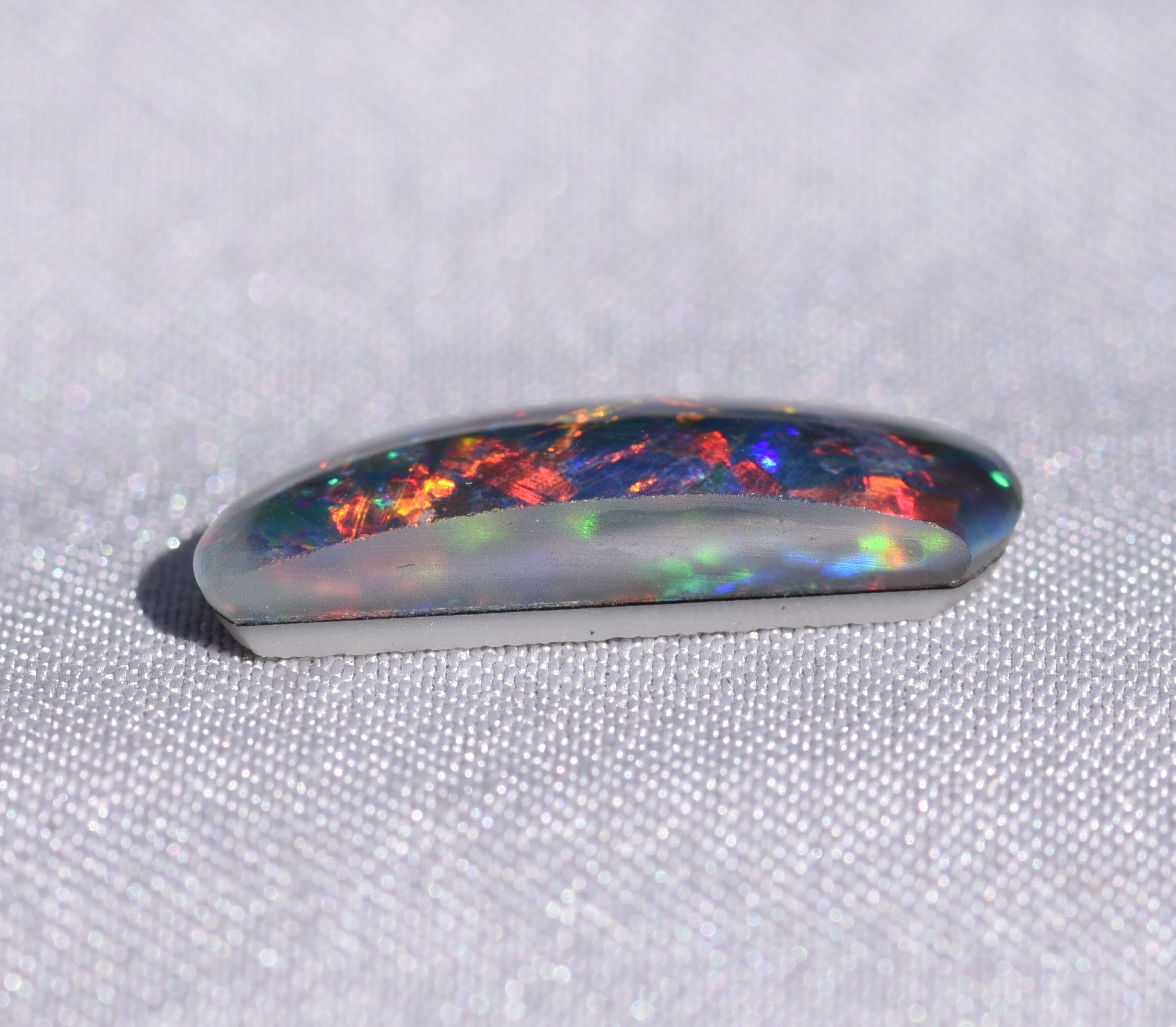Early Synthetic Opal
Soon after the ordered, sphere-based structure of opal was revealed by CSIRO scientists, innovative potential synthesisers of this material started to postulate the various methods by which synthetic opals could be manufactured. All that was needed were suitably sized spherical particles of a suitable transparent medium. In fact, any transparent material capable of being flocculated and deposited into a three-dimensional ordered spherical array would be suitable for producing imitation opal; provided the spheres produced were of suitable size and optical transparency, and that they were arrayed in the appropriate Bragg relationship.
Two types of imitation opal were originally produced: a plastic variety with “latex” (actually polystyrene) spheres, and a silica based variety. The method of production of the silica spheres is noted in the CSIRO Patent Specification2 as:
The methods of further processing these spheres was then discussed in following pages that detailed the aggregation of these spheres into a suitable size and their subsequent sedimentation and compaction.
An examination of the earliest manufactured synthetic opal reveals a white material that shows almost no play-of-colour. This opal was too soft and porous to take a polish. Additionally when immersed in water the porosity was such that a substantial amount of water was absorbed by the material. The result of this synthesis was a white or light opal that displayed some very small patches of play-of-colour that were subdued, usually of a single colour and quite random in distribution. A SEM (Scanning Electron Micrograph) image of this opal reveals a substantial degree of porosity in this material, and that the actual stacking of the spheres is not very tight, that is close packed. In addition, the particles of silica forming this synthetic opal are not really spherical when compared with the SEM’s of either natural opal or other more modern synthetic opals.
SEM micrograph showing the structure of early CSIRO synthetic opals.












